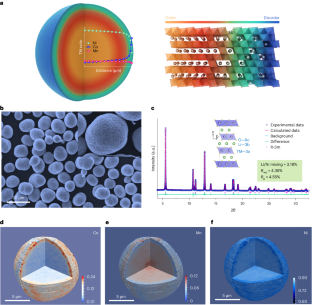2024-10-29 NASA
<関連情報>
- https://www.nasa.gov/earth/nasa-helps-find-thawing-permafrost-adds-to-near-term-global-warming/
- https://agupubs.onlinelibrary.wiley.com/doi/10.1029/2023GB007969
永久凍土地域の温室効果ガス収支は弱いCO2吸収源とCH4とN2O供給源を示唆、しかしトップダウンとボトムアップの手法でその大きさは異なる Permafrost Region Greenhouse Gas Budgets Suggest a Weak CO2 Sink and CH4 and N2O Sources, But Magnitudes Differ Between Top-Down and Bottom-Up Methods
G. Hugelius, J. Ramage, E. Burke, A. Chatterjee, T. L. Smallman, T. Aalto, A. Bastos, C. Biasi, J. G. Canadell, N. Chandra, F. Chevallier, P. Ciais, J. Chang, L. Feng, M. W. Jones, T. Kleinen, M. Kuhn …
Global Biogeochemical Cycles Published: 26 October 2024
DOI:https://doi.org/10.1029/2023GB007969

Abstract
Large stocks of soil carbon (C) and nitrogen (N) in northern permafrost soils are vulnerable to remobilization under climate change. However, there are large uncertainties in present-day greenhouse gas (GHG) budgets. We compare bottom-up (data-driven upscaling and process-based models) and top-down (atmospheric inversion models) budgets of carbon dioxide (CO2), methane (CH4) and nitrous oxide (N2O) as well as lateral fluxes of C and N across the region over 2000–2020. Bottom-up approaches estimate higher land-to-atmosphere fluxes for all GHGs. Both bottom-up and top-down approaches show a sink of CO2 in natural ecosystems (bottom-up: −29 (−709, 455), top-down: −587 (−862, −312) Tg CO2-C yr−1) and sources of CH4 (bottom-up: 38 (22, 53), top-down: 15 (11, 18) Tg CH4-C yr−1) and N2O (bottom-up: 0.7 (0.1, 1.3), top-down: 0.09 (−0.19, 0.37) Tg N2O-N yr−1). The combined global warming potential of all three gases (GWP-100) cannot be distinguished from neutral. Over shorter timescales (GWP-20), the region is a net GHG source because CH4 dominates the total forcing. The net CO2 sink in Boreal forests and wetlands is largely offset by fires and inland water CO2 emissions as well as CH4 emissions from wetlands and inland waters, with a smaller contribution from N2O emissions. Priorities for future research include the representation of inland waters in process-based models and the compilation of process-model ensembles for CH4 and N2O. Discrepancies between bottom-up and top-down methods call for analyses of how prior flux ensembles impact inversion budgets, more and well-distributed in situ GHG measurements and improved resolution in upscaling techniques.
Key Points
- The northern terrestrial permafrost region was a weak annual CO2 sink and stable source of CH4 and N2O during the time period 2000–2020
- The global warming potential is indistinguishable from neutral over a 100 years time period but a net source of warming over a 20 year period
- Bottom-up and top-down methods yield different magnitudes of estimates that cannot be fully reconciled
Plain Language Summary
The northern permafrost region covers large areas and stores very large amounts of carbon and nitrogen in soils and sediments. With climate change, there is concern that thawing permafrost will release greenhouse gases into the atmosphere, shifting the region from long-term cooling of the global climate to a net warming effect. In this study, we used different techniques to assess the greenhouse gas budgets of carbon dioxide, methane and nitrous oxide for the time period 2000‒2020. We find that the region is a net sink of carbon dioxide, mainly in boreal forests and wetlands, while carbon dioxide is emitted from inland waters and fires affecting both forest and tundra. Lakes and wetlands are strong sources of methane, which contributes to warm the climate significantly, especially over shorter timescales. Nitrous oxide is emitted at low rates across the region, with a relatively limited impact on climate. In summary, the climate warming from the northern permafrost region is likely close to neutral when calculated over a 100 years time window, but it warms the climate when calculated over a 20 years time window.



